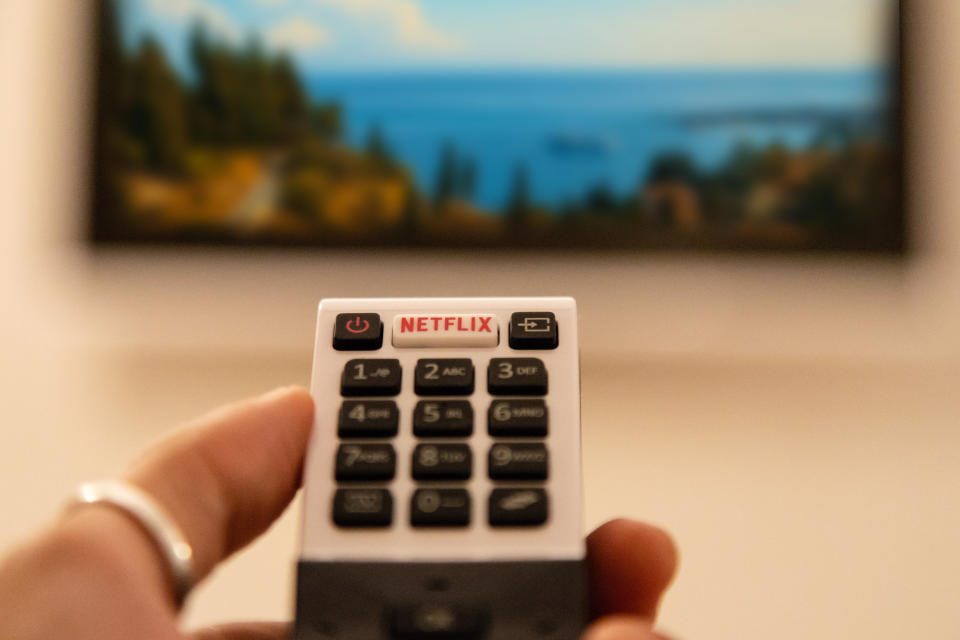Netflix subscriber survey reveals an opportunity for price hikes

Netflix (NFLX) has officially shown that it can not only render you unproductive for an entire weekend, but it can also do it with Academy Award-winning original content too after its Oscar wins for best director, cinematography, and best foreign language film for international hit “Roma.”
With so much going Netflix’s way, and its overseas subscriber numbers on the rise, now may be the best time for the company to increase its subscription prices for international customers. And, according to a survey from Piper Jaffray, if Netflix made such a move, half its users abroad would have no problem ponying up the extra dough.
“We expect Netflix will geographically stagger price hikes, suggesting [international] price increases are likely to take effect, in at least some [international] markets, in late '19 or 2020,” Piper Jaffray analyst Michael Olson wrote in a research note.
An overseas price bump
Netflix’s biggest growth opportunity is in overseas markets. The company’s streaming services are available in more than 190 countries around the world. The only places you can’t get it are in China, which the company is trying to expand into, and countries under U.S. sanctions.
Despite its geographical reach, though, Netflix has just 139 million users. For comparison, Facebook has 1.3 billion daily active users. In other words, there is plenty of room to expand within its available markets. And it’s doing just that. In Q4 2018, the company added 8.8 million new paid subscribers, with the vast majority, 7.3 million, coming from international consumers. Netflix’s Q1 2019 guidance points to an additional 8.9 million subscribers joining.
After raising its prices in the U.S. market from $8 to $9 for a Basic plan, from $11 to $13 on a Standard plan and from $14 to $16 for a Premium plan with little user backlash, it would make sense for the streaming giant to hike prices internationally.
Jaffray surveyed 1,100 users in the U.K., Spain, Germany, France, Australia, Brazil, and Mexico. According to Olson, 24% of surveyed consumers were willing to pay $1 more for the streaming service per month, while 10% said they would pay $2 more each month. Another 16% said they would pay an additional $3 or more each month.
If Netflix chooses to increase prices internationally by roughly $1.08 per customer, the company could see its earnings per share increase sharply in 2020, jumping as much as $2, to $8.75, according to Olson.
Such incremental increases mean Netflix will still retain its value for most consumers, especially when you consider the number of hours customers watch content each month.
Netflix continues to pump out fresh original content, but doing so has cost the company $8 billion in 2018, with Goldman Sachs estimating that could be as high as $13 billion. But the streaming service can’t push that kind of cash into new content for long if it can’t make up for it elsewhere.
That said, plenty of streaming services — including Disney’s (DIS) upcoming streaming offering and Apple’s (AAPL) rumored service — are sure to give Netflix serious competition. To stave off the threat of any newcomers, Netflix will have to provide the kind of content users can’t find anywhere else. And in order to do that it will need to continue growing abroad and raising its rates.
Now may be as good a time as any.
More from Dan:
How much you’ll pay for major streaming services if you ditch cable
Samsung’s $1,980 smartphone will test the limits of what consumers will pay
Email Daniel Howley at [email protected]; follow him on Twitter at @DanielHowley. Follow Yahoo Finance on Facebook, Twitter, Instagram, and LinkedIn.www.forex-viet.com/
